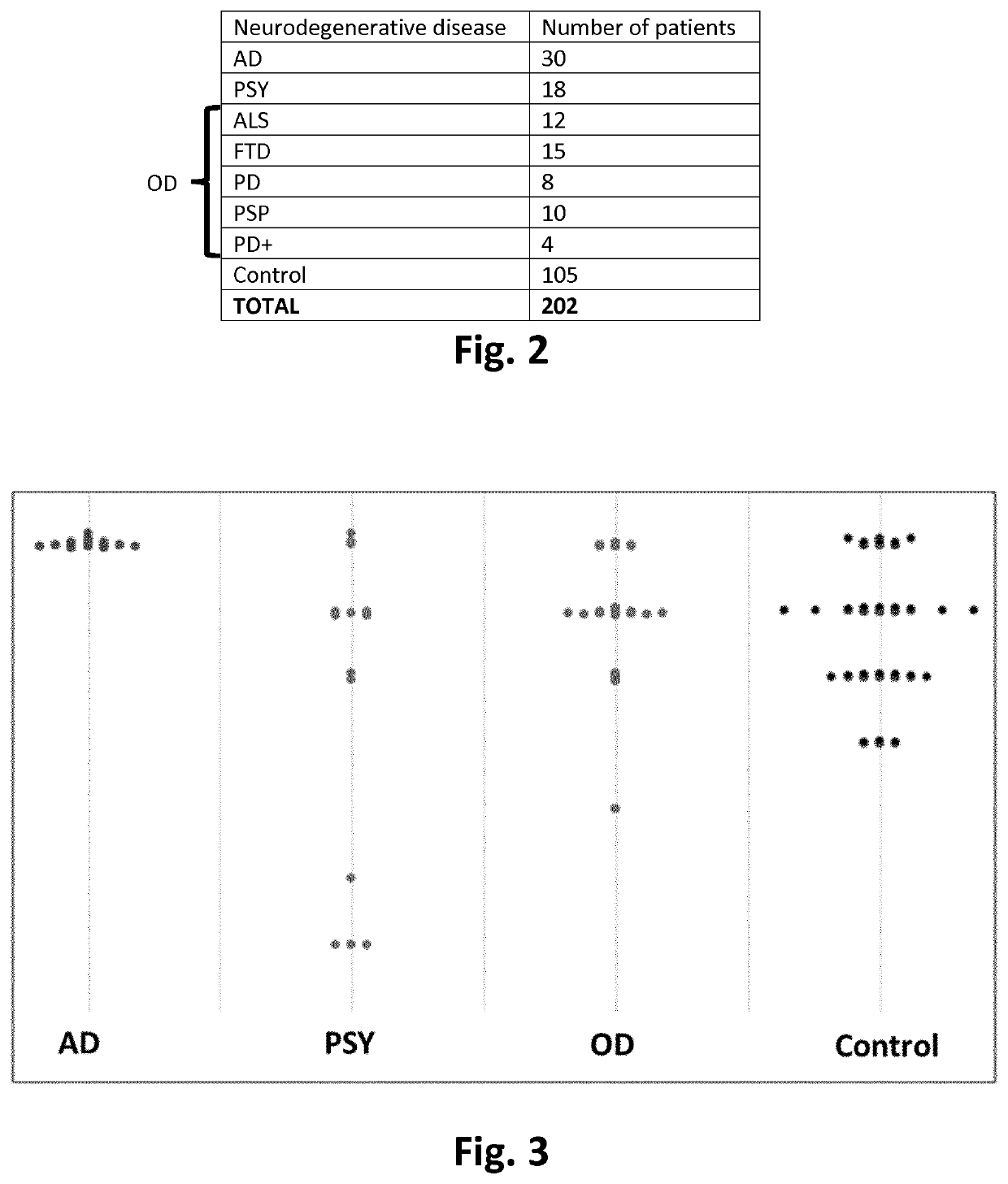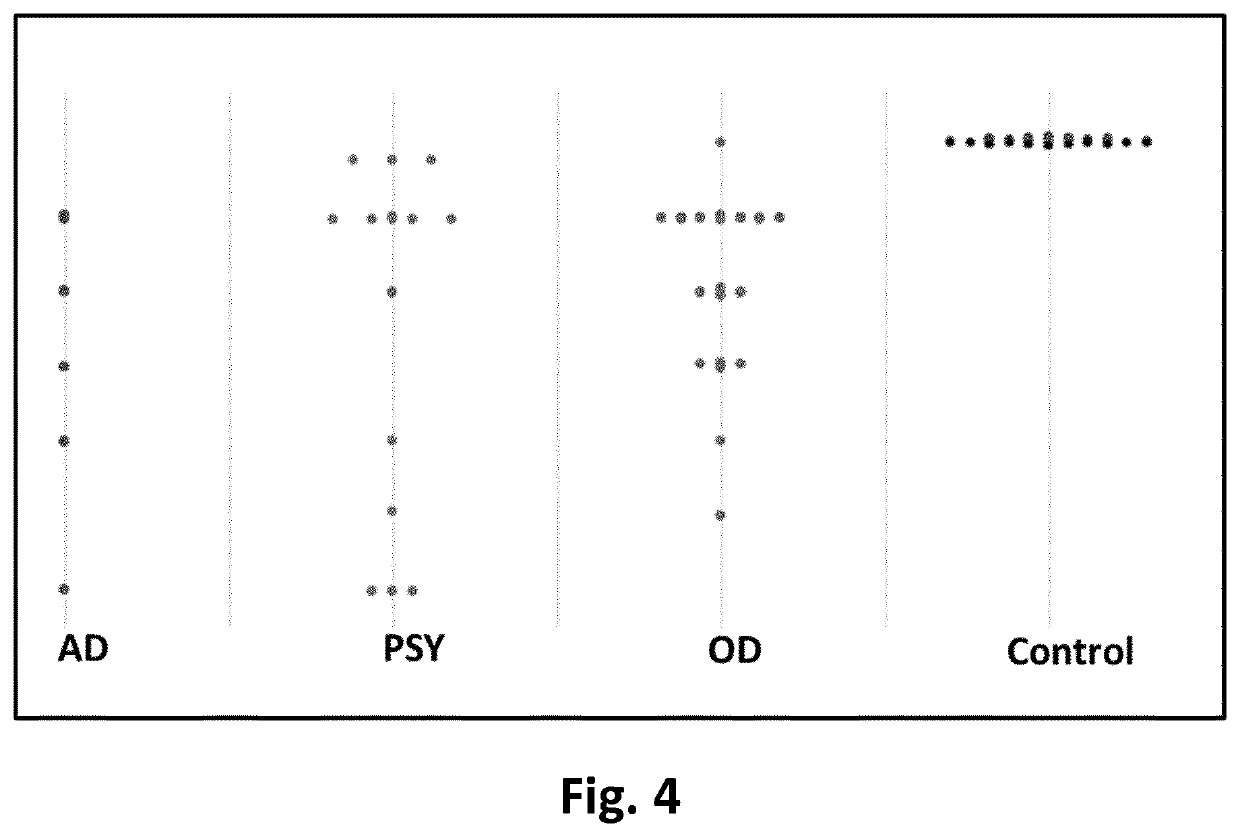Method of Performing Differential Diagnosis of Neurodegenerative Diseases in a Subject
a neurodegenerative disease and subject technology, applied in the field of performing a differential diagnosis of neurodegenerative diseases in a subject, can solve the problems of hesitating and giving inappropriate treatment to one patient, difficult diagnosis, expensive and cumbersome experiments, etc., to improve the patient/his medical condition, improve the effect of responding to the diagnosis, and facilitate the repeatability of the diagnosis
- Summary
- Abstract
- Description
- Claims
- Application Information
AI Technical Summary
Benefits of technology
Problems solved by technology
Method used
Image
Examples
Embodiment Construction
[0058]The present invention has allowed for the development of an efficient differential diagnosis method.
[0059]The diseases that are diagnosed thanks to the method of the present invention are the following neurodegenerative diseases: Alzheimer's disease (AD), mental depression (PSY), amyotrophic lateral sclerosis (ALS), fronto-temporal dementia (FTD), Parkinson's disease (PD), progressive supranuclear palsy (PSP) and Parkinson's disease with dementia (PD+). The diagnosis is able to discriminate which neurodegenerative disease a patient is suffering from. The diagnosis method of the present invention also evidently allows for discriminating healthy patients (CTRL or control).
[0060]On FIG. 1, for simplicity, only AD and PSY have been depicted. The rest of the studied diseases has been incorporated under the reference OD (other diseases). This is because the number of subjects in the training model step is less than 15 subjects in these diseases (see also FIG. 2).
[0061]The sensitivit...
PUM
 Login to View More
Login to View More Abstract
Description
Claims
Application Information
 Login to View More
Login to View More - R&D
- Intellectual Property
- Life Sciences
- Materials
- Tech Scout
- Unparalleled Data Quality
- Higher Quality Content
- 60% Fewer Hallucinations
Browse by: Latest US Patents, China's latest patents, Technical Efficacy Thesaurus, Application Domain, Technology Topic, Popular Technical Reports.
© 2025 PatSnap. All rights reserved.Legal|Privacy policy|Modern Slavery Act Transparency Statement|Sitemap|About US| Contact US: help@patsnap.com



